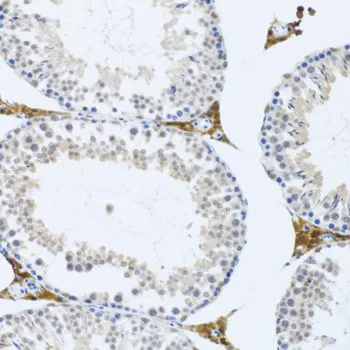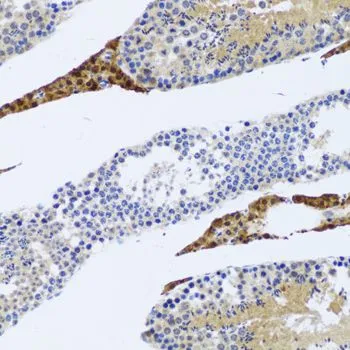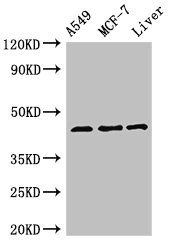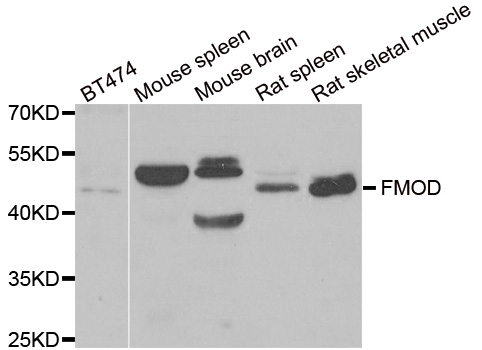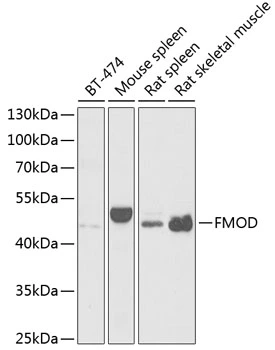
WB analysis of various sample lysates using GTX54035 Fibromodulin antibody. Dilution : 1:1000 Loading : 25microg per lane
Fibromodulin antibody
GTX54035
ApplicationsWestern Blot, ImmunoHistoChemistry, ImmunoHistoChemistry Paraffin
Product group Antibodies
TargetFMOD
Overview
- SupplierGeneTex
- Product NameFibromodulin antibody
- Delivery Days Customer7
- Application Supplier NoteWB: 1:500 - 1:2000. IHC-P: 1:50 - 1:200. *Optimal dilutions/concentrations should be determined by the researcher.Not tested in other applications.
- ApplicationsWestern Blot, ImmunoHistoChemistry, ImmunoHistoChemistry Paraffin
- CertificationResearch Use Only
- ClonalityPolyclonal
- ConjugateUnconjugated
- Gene ID2331
- Target nameFMOD
- Target descriptionfibromodulin
- Target synonymsFM, SLRR2E, fibromodulin, KSPG fibromodulin, collagen-binding 59 kDa protein, epididymis secretory sperm binding protein, keratan sulfate proteoglycan fibromodulin
- HostRabbit
- IsotypeIgG
- Protein IDQ06828
- Protein NameFibromodulin
- Scientific DescriptionFibromodulin belongs to the family of small interstitial proteoglycans. The encoded protein possesses a central region containing leucine-rich repeats with 4 keratan sulfate chains, flanked by terminal domains containing disulphide bonds. Owing to the interaction with type I and type II collagen fibrils and in vitro inhibition of fibrillogenesis, the encoded protein may play a role in the assembly of extracellular matrix. It may also regulate TGF-beta activities by sequestering TGF-beta into the extracellular matrix. Sequence variations in this gene may be associated with the pathogenesis of high myopia. Alternative splicing results in multiple transcript variants. [provided by RefSeq, Jun 2013]
- Storage Instruction-20°C or -80°C,2°C to 8°C
- UNSPSC12352203

